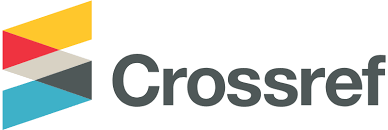Técnicas que evalúan el comportamiento y las decisiones de compra del consumidor frente a los alimentos
DOI:
https://doi.org/10.46363/jnph.v1i4.1Palabras clave:
técnicas, decisión del consumidor, alimentosResumen
Estas técnicas permiten medir las emociones, sentimientos , sensaciones , de las personas frente a un estímulo que se les presenta, son utilizadas por las grandes empresas como una herramienta de investigación de mercados que les permite utilizar al máximo sus recursos minimizando costos, lograr entender las reacciones de las personas frente a cualquier tipo de alimento, así las empresas pueden saber qué reacción tendrán los consumidores frente a sus anuncios publicitarios dejando de invertir en campañas costosas que seguramente no van a tener una reacción favorable en su público.
A través de esta investigación se encuentran casos que aplicaron diversas técnicas para entender mejor las reacciones y expresiones no verbales de los consumidores y asimismo tener presente que son realmente efectivas para medir el impacto que tiene la publicidad o las marcas en ellos. La finalidad del uso de estas técnicas en marketing es buscar la eficacia en las decisiones. Averiguar a qué estímulos las personas prestan más atención y a cuáles no, influye directamente en el comportamiento de la persona. Lo que se trata en este sentido es de comprender más y mejor a las personas.
Citas
Alexandra A, K., & Betina Piqueras, F. (2018). Measuring Implicit Associations in Food-Related Consumer Research. Woodhead Publishing Series in Food Science, Technology and Nutrition, 2, 203-230.
Alvarez, R (2011). Neuromarketing, fusión perfecta: seducir al cerebro con inteligencia para ganar en tiempos exigentes. Editorial: Prentice Hall. Madrid. España.
Arellano, R. (2004). Comportamiento del consumidor y marketing. México: Harla.
Botello, S. & Suárez, K. (2018). Tendencias de investigación en Neuromarketing. Cuadernos Latinoamericanos de Administración, vol. XIV, núm. 27, pp. 53-90.
Blair, I., Dasgupta, N., & Glaser, J. (2015). Implicit attitude. In M. Mikulincer, P. R. Shaver, E. Borgida, & J. A. Bargh (Eds.), APA handbook of personality and social psychology. American Psychological Association 1, 665-691.
Braido. (2006). Neuromarketing, neuroeconomia y negocios. Madrid, España.: Puerto Norte Sur.
Braido, N. (2007). “El neuromarketing le apunta a la cabeza”. En Tiempo de mercadeo. Vol 3. Febrero- Abril. Nº 12. P 27 – 32. Medellín.
Ben-Gurion. (2006). Intact Galvanic Skin Responses and Impaired Self-Reports in Response to Emotional Pictures. Annals of the New York Academy of Sciences 985(1), 501 – 504.
Cairns, G. (2019). A critical review of evidence on the sociocultural impacts of food marketing and policy implications. Appetite, 193-207.
Chicoma- Ruiz, G.P.; Martel-Carranza, C.P. & Torero-Solano, N.Z. (2021). Neuromarketing y decisión de compra en consumidores de la región Huánuco-Perú. Desafíos, 12(1); 37-43.
Diaz-Tay, J., Jayasinghe, N., Lucas PW, McCallum JC, Jones JT.(1991). Association between surface electromyography of human jaw-closing muscle and quantified food breakdown. Arch Oral Biol, 36(12):893-898.
Duque, P. (2014). Neuromarketing una herramienta validadora en la toma de decisiones en mercadeo visual-auditivo. Tesis para optar el grado de magister. Universidad Nacional de Colombia.
Fay C.M, G., Anne, K., & Thomas, K. (2016). Restrained eating predicts effortful self-control as indicated by heart rate variability during food exposure. Appetite, 96, 502-508.
Garcia, J. P. (2008). Evolutionary neuromarketing:Darwinizing the neuroimagingparadigm for consumer behavior. J. Consumer Behav. 7: 397–414.
Hawkins, D. I. (2004). Comportamiento del Consumidor. Construyendo estrategias de marketing (9° Edición ed.). México: Mc Graw Hill.
Hoffman, C. (2007). Principios de marketing y sus mejores prácticas. México: Thompson.
Ismael, D., & Ploeger, A. (2019). Development of a sensory method to detect food-elicited emotions using emotion-color association and eye-tracking. Foods, 8 (6), 217.
Izaguirre-Torres, Delia, Málaga-Juárez, Jorge, Chuqui-Diestra, Saúl Ricardo, Velásquez-Ccosi, Percy Fermín, & Siche, Raúl. (2020). Neuroscience in the advertising of agri-food products: a beneficial tool or a public health hazard?. Scientia Agropecuaria, 11(4), 629-639.
Jensen. (2014). The Pepsi Paradox. Unpublished Masters Thesis Aalborg University. Dinamarca.
Johann D, K., Anne, K., Anastasia, B., Anita, K., Martin P, P., Thomas, G., & Henrik, W. (2019). Self-control is linked to interoceptive inference: Craving regulation and the prediction of aversive interoceptive states induced with inspiratory breathing load. Cognition, 193, 104028.
John C.S, p., Raithatha, C. E., & Andrew C.S, m. (2002). Swallow indicator methodology as an enhancement to combined time–intensity measurement of flavour release and electromyography for monitoring mastication. Food Quality and Preference, 13, 47-55.
Kimura-Ueda, Kayo; Shimazaki, Kazuo.; Sugimoto, Kumiko. (2018). Influence of habitual mouth breathing on taste sensation. Orthodontic Waves, 77, 24-30.
MegSimione, Chrystel, L., Benjamin, L. R., cMirna, D. V., Marc, A., Mireille, M., & Jordan R, G. (2018). Differing structural properties of foods affect the development of mandibular control and muscle coordination in infants and young children. Physiology & Behavior, 186, 62-72.
Meissner, F., & Rothermund, K. (2015). A thousand words are worth more than a picture? The effects of stimulus modality on the implicit asscociation test. Social Psychological and Personality Science, 6 (7), 740-748.
Morales. (2013). Neuromarketing: efectos emocionales y cerebrales en sujetos expuestos a algunos anuncios publicitarios audiovisuales. Tesis para optar el título de licenciado. Universidad Latina de América. Mexico.
Motoki, K., Saito, T., Nouchi, R., Kawashima, R., & Sugiura, M. (2019). Corrigendum to “Anxiety increases visual attention to hedonic foods: A preliminary eye-tracking study on the impact of the interplay between integral and incidental affect on foods. Appetite, 137, 217-225.
Nakazawa, F. & .Togashi, M. (2000). Evaluation of food texture by mastication and palatal pressure, jaw movement and electromyography. Hydrocolloids, part 2, 473-483.
Noriega, E. & Paredes, C. (2014). influencia del neuromarketing en los niveles de compra del consumidor del centro comercial real plaza en la ciudad de Trujillo. Tesis para obtener el título de licenciado. Universidad Privada Antenor Orrego. Trujillo-Perú.
Rivera Camino, J., Arellano Cueva, R., & Molero Ayala, V. (2013). Conducta del consumidor: Estrategias y Políticas aplicadas al Marketing.
Robertson, D. & Lunn,P. (2020). The effect of spatial location of calorie information on choice, consumption and eye movements, Appetite 144 (1), 104446.
Saldaña, E.; Siche, R.; Luján, M. & Quevedo, R (2013). Computer vision applied to tha inspection an quality control of fluits an vegetables. Braz J Food Technol, 16(4), 254-272.
Samuelson, P. (1953). Consumption Theorems in Terms of OverCompensation Rather than Indifference Comparisons. New Series.
Sayaka, N., aKaoru, K., Yayoi, W., Fumiyo, H., Kenya, S., Koji, S., & Mitsuya, S. (2014). A trial of human electromyography to evaluate texture of softened foodstuffs prepared with freeze-thaw impregnation of macerating enzymes. Innovative Food Science & Emerging Technologies 21, 188-194.
Schiffman, L., & Kanuk, L. (2005). Comportamiento del consumidor. México: Prentice Hall Hispanoamericana.
Stanton, W., Etzel, M., & Walker, B. (2007). Fundamentos de marketing. México: McGraw Hill.
Steinhauser, J.; Janssen, M. & Hamm, U.(Octubre de 2019). Consumers’ purchase decisions for products with nutrition and health claims: What role do product category and gaze duration on claims play? Appetite, 141.
Tello, F. P., Bravo, A. S., & Martínez, L. (2010). Análisis de la estructura de la Escala de Actitudes hacia la Inmigración en una muestra de estudiantes chilenos, Revista Iberoamericana de Diagnóstico y Evaluación-– e Avaliação Psicológica, 1 (29) 97-113.
Tormo, F. A. (2016). Estudio del tiempo de fijación visual y la respuesta galvánica de la piel en la detección de expresiones faciales en individuos. Tesis para optar la licenciatura. Universidad Politécnica de Valencia.
Tórtora, G., & Machín, L. A. (2019). Influence of nutritional warnings and other label features on consumers’ choice: Results from an eye-tracking study, Food Research International, 119, 605-611.
Uzawa, H. (1960). Preference and Rational Choice in the Theory of Consumption. California.
Vladan, A., & JeanPierre, M. (2002). Alterations in blood pressure and heart rate during cyclic changes in food intake. American Journal of Hypertension, 15, 147A.
Weber, K., & Story, M. (2006). Internet food marketing strategies aimed at children and adolescents: A content analysis of food and beverage brand web sites. 1463-1466.
Wilson, R.; Gaines, J. & Hill, R. (2008). Neuromarketing and consumer free. Fall, 42(3), 389-410.
Yasui, Y., Tanaka, J., Kakudo, M., & Tanaka, M. (2019). Relationship between preference and gaze in modified food using eye tracker. Journal of Prosthodontic Research,36 (2), 210-215.
Zafar U. Ahmed & Franklin B. Krohn.(1993). Understanding the Unique Consumer Behavior of Japanese Tourists. Journal of Travel & Tourism Marketing,1(3), 73-86.
Zmuda. (2011). How Pepsi blinked, fell behind Diet Cok. Obtenido de http://adage.com/article/news/pepsi-blinked-fell-diet-coke/149496/.







